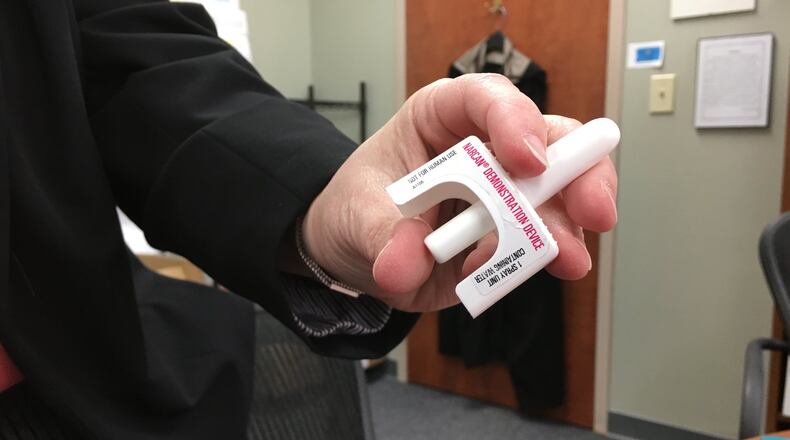The public health department gives away the medication as part of its local Project DAWN (Deaths Avoided With Naloxone) program, which is a network of opioid overdose education and naloxone distribution programs coordinated by the Ohio Department of Health.
In 2021, Project DAWN program distributed 3,044 naloxone kits, 52% more than the previous year.
Melody Kingsley,Project DAWN program coordinator, said this increase in kits given out came at the same time as accidental overdose deaths climbed. In 2021, 51 people died from an accidental overdose in the county, according to preliminary data, which is up from 43 lives lost in 2020.
This isn’t just a Greene County trend, but something happening statewide and nationwide.
“We’re trying to distribute naloxone so that laypeople, bystanders, people who use drugs, friends and family of people who use drugs, can all carry naloxone,” Kingsley said. “Really anyone who wants to carry it, can carry it.”
One of the ways the kits are distributed is through the public health department’s syringe exchange programs, which are in Xenia and in Fairborn. By the end of December 2021, the county’s SafeTrade program had exchanged 20,180 syringes, a 32% increase over the previous year, and these visits were also a chance to provide education and naloxone.
The county also added a new, more convenient way to get the kits. In May 2020, the health department also began a mail-order naloxone program and distributed 233 kits in 2021.
There are specific groups where they focus on promoting naloxone.
Kingsley said there’s been an increase in fentanyl being found in other drugs including stimulants, which people who use cocaine or methamphetamines are not always expecting and so they might not have the opioid overdose reversal medication on hand.
“They have not been as prepared because they don’t feel the need for naloxone,” she said. “So we’ve been trying to get more naloxone out to people who use stimulants, and we also give out fentanyl test strips through our safe trade syringe exchange program so that people can test their drug supply.”
They also encourage people to carry the medication who go into treatment or rehabilitation, because it is common to go back and use drugs at least once while trying to reach recovery. Friends and family of people who use drugs are also encouraged to learn how to use naloxone and carry it.
But she said anyone can learn to use naloxone and carry it with them just in case. In the U.S. about 40% of overdose reversals were done by bystanders, and a study was done in Ohio and they found about 70% of overdose reversals were done by bystanders, Kingsely said.
She cited former U.S. Surgeon General Jerome Adams, who once pointed out that people are more likely to need to use naloxone to help someone than to use CPR.
“But I’d say I know a lot more people that are trained in CPR than overdose education and naloxone use,” she said.
Project DAWN
Anyone in Ohio can go to the Ohio Department of Health website at odh.ohio.gov and search to find a list of Project DAWN locations to find the closest program.
About the Author

